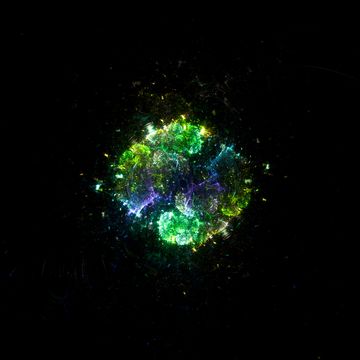- The Sun Cable is a 2,400-mile undersea cable that delivers solar power from Australia to Singapore.
- Undersea cables already deliver all the world's telecommunications.
- The Sun Cable is privately developed, with estimated completion in 2027.
Entrepreneurs in Australia have an ambitious new plan they claim could provide enough electricity to replace 20 percent of the existing grid of Singapore. The idea is to pipe renewable solar energy through an undersea cable from Australia’s largely empty Northern Territory.
If this sounds wild, it’s modeled after existing technology that’s already in use in similar contexts. The high voltage direct current (HVDC) cable, in its extra-long format, is in use in China and in Europe as part of those countries’ existing power grids. Europe’s system carries wind power among other sources, and combining as much capacity as possible into as few low-loss cables as possible means less infrastructure and lower power waste.
Europe aims to make HVDC a huge part of its whole grid, requiring specialized additional technology to make sure the power can be redistributed at its destination. The Australian sunshine seaway is a little bit different, as one trunk connecting two far-apart land masses: Australia’s sparsely inhabited Northern Territory and the dense, import-only energy grid of island Singapore.
Australia’s far Northern Territory shares a sunny, savanna climate with parts of the Amazon Rainforest and the tropical jungles of southeast Asia. With an extremely low population, there’s plenty of room to spread out and build solar panels. The developers say these panels will be modular, easy to install, and low risk compared to panels that are more involved to install. In total, the 15,000 hectares (about 58 square miles) of solar panels will deliver 3 gigawatts of power. That’s 3,000 megawatts, which puts the array and pipeline on par with nuclear power plants around the world.
Of course, the wildcard in this setup isn’t the solar panels—it’s the 2,400-mile cable that runs at the bottom of the ocean. If this sounds like pure science fiction, remember that telecommunications around the world have used deep sea cables for more than a century and a half. Everything we do that circles the world is because of these cables. And yes, replacing 20 percent of Singapore’s grid with solar power sounds great. But how much will this cost?
In a 2018 report, the U.S. Energy Information Administration (EIA) places the cost of HVDC cable at “between $1.17 million per mile and $8.62 million per mile” in 2017 dollars, depending on “power capacity to be transmitted, type of transmission medium (submarine or land‐based), environmental considerations, access to easements rights‐of‐way (ROWs), and cost of converter stations and associated equipment.”
China’s HVDC pipeline carries up to 12 gigawatts over a slightly shorter distance, but it was built by the state and the costs are mysterious. For Australia and Singapore, the 2,400-mile cable would cost an estimated 2.8 billion to 20.7 billion using the EIA numbers. (There’s no mention of cost on the Sun Cable website.)
Construction is slated to begin now, with completion in 2027. This means the 2030 estimates for Singapore’s 20% reduction in natural gas power would take effect almost right away, not gradually. And the price tag could also fall between now and then, as the cost of solar panels and other building blocks continues to drop.

Caroline Delbert is a writer, avid reader, and contributing editor at Pop Mech. She's also an enthusiast of just about everything. Her favorite topics include nuclear energy, cosmology, math of everyday things, and the philosophy of it all.













